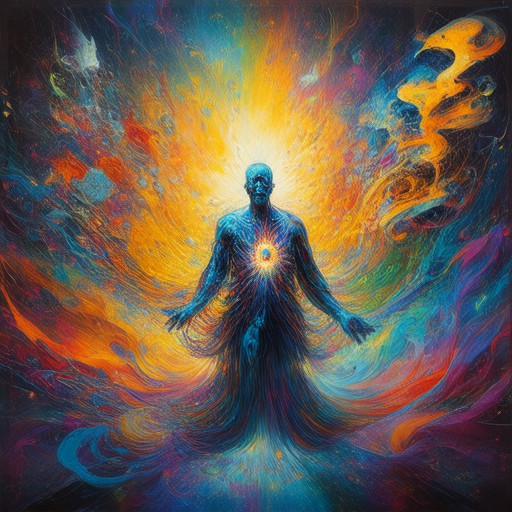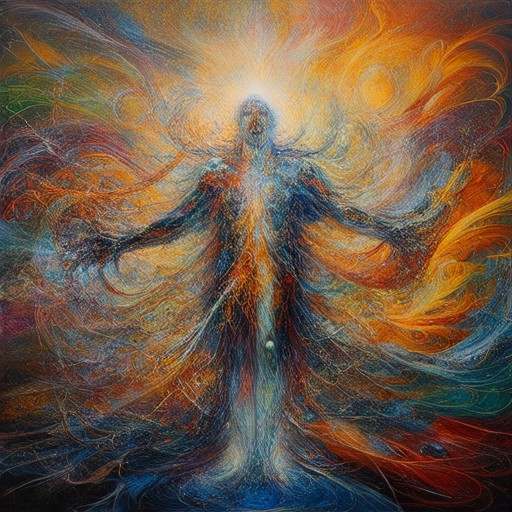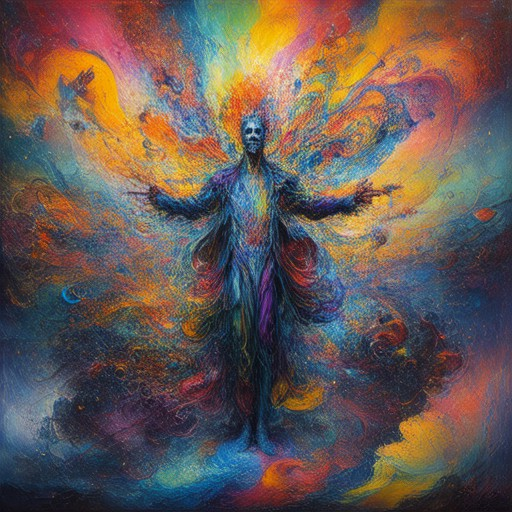Creativity is a spark that ignites when diverse mediums converge, blending textures, colors, and concepts to form unique works of art. For those seeking inspiration, mixed media offers endless possibilities to explore uncharted creative territories. Whether you’re an aspiring artist or a seasoned creator, finding the right mix of materials and techniques can transform ordinary objects into extraordinary pieces. This guide delves into the world of mixed media, offering insights into what inspires mixed media artists, project ideas that inspire creativity, and techniques to bring your vision to life. From understanding the best adhesives for mixed media projects to mastering sealing techniques that preserve your work, this article is designed to equip you with the knowledge and confidence to excel in the dynamic realm of mixed media art.

What Inspires Mixed Media Artists?
Mixed media artists draw inspiration from a diverse array of sources, blending different textures, colors, and materials to create unique works. Their creativity often stems from personal experiences, cultural influences, and explorations of innovative art techniques.
- Materials and Textures: Mixed media artists are often inspired by the tactile qualities of various substances, such as metal, glass, fabric, or recycled materials. These elements challenge traditional mediums and invite experimentation.
- Artistic Techniques: They are influenced by techniques from different art forms, such as painting, sculpture, photography, and collage. These techniques allow them to manipulate and combine materials in unconventional ways.
- Personal Journeys: Many mixed media artists find motivation in their own life experiences, using their stories to create meaningful pieces. This introspective approach leads to deeply personal yet universally relatable artwork.
- Cultural Context: The history of art, cultural movements, and global issues inspire them to address contemporary themes. By incorporating symbols and motifs from various cultures, they create works that resonate on a broader scale.
- Collaboration and Community: Working with others or observing how communities interact can spark ideas. Collaborative projects and group shows often lead to fresh perspectives and innovative approaches to mixed media.
- Sustainability and Ethical Practices: Increasingly, mixed media artists are inspired by eco-friendly practices. Using recycled materials and exploring sustainable art methods challenges conventional norms and promotes environmental awareness.
- Technology Integration: Digital tools and advancements in technology inspire artists to merge traditional media with modern innovations. This fusion creates dynamic, interactive, and visually striking works.
- Exploration and Experimentation: The very process of experimenting with different materials and techniques is a driving force. Mixed media artists thrive on pushing boundaries and discovering new ways to express themselves.
Mixed media artists continue to evolve, drawing from a constantly expanding palette of inspiration. Their ability to blend the familiar with the unexpected makes their work uniquely captivating and thought-provoking.
What Are Good Mixed Media Art Project Ideas?
Explore these innovative mixed media art project ideas to spark your creativity and elevate your artistic expression:
1. Collage Canvas Experimentation
Create a unique piece by combining different textures, papers, and found objects onto a canvas. Use paints, inks, and glue to layer your materials, allowing the textures to tell a story.
2. Mixed Media Portraits
Start with a sketch of a face or figure on canvas. Then, enhance it with oil pastels, metallic leaf, or fabric swatches to add depth and dimension. Finish with a coat of varnish for protection.
3. Abstract Geometric Sculptures
Construct three-dimensional shapes using cardboard, metal, or wood. Paint them with contrasting colors and add patterns or textures using stencils or sandpaper for a dynamic effect.
4. Encaustic Art Pieces
Melt wax and oil paints together to create a molten surface. Pour and manipulate the encaustic medium on canvas or board, then add resin for a durable finish. Incorporate found objects or collaged elements for added interest.
5. Photo Manipulation and Montage
Take a photograph and alter it using airbrushes, paint, or digital tools. Combine it with other images or textures to create a surreal or narrative scene. Display it in a frame or as a large-scale print.
6. Mixed Media Landscapes
Build a landscape using paper mache, foam, or clay. Paint it with acrylics and add details like trees, rocks, or water features using textured mediums. Consider incorporating small figurines or lighting effects for depth.
7. Textile and Metal Fusion
Combine fabrics, metals, and beads to create wearable art or wall hangings. Use a sewing machine or hand stitching to attach materials, then polish the surfaces with patinas or lacquers for a polished look.
8. Graffiti-Inspired Mural
Transform a large wall or wooden panel into a graffiti-style mural using spray paint, stencils, and street art elements. Add dimensional letters or numbers for a bold, urban feel.
9. Book Sculptures
Repurpose old books by cutting, folding, or painting them to create three-dimensional sculptures. Use glue, nails, or wire to assemble the pieces into abstract forms or scenes.
10. Interactive Installations
Design an installation that invites viewer participation. Use buttons, lights, or mirrors to create an interactive experience. Consider adding sounds or motion elements for a multi-sensory art piece.
For more resources and inspiration, explore Artful Journey , a platform dedicated to helping artists discover new techniques and creative processes.

Getting Started with Mixed Media Art
Mixed media art combines diverse creative techniques and materials to create unique and dynamic artworks. Whether you’re an aspiring artist or looking to explore new creative avenues, here’s a guide to help you embark on your journey:
Gathering Supplies
- Acquire various art materials such as paints, markers, glue, scissors, and different types of paper.
- Consider digital tools like graphic design software or drawing apps (e.g., Procreate for iPad). Free alternatives like Krita or GIMP can also be suitable for beginners.
- Experiment with found objects, textures, and unexpected materials to add depth to your pieces.
Setting Up Your Workspace
- Create a dedicated space for your art projects, ensuring it’s organized and clutter-free.
- Invest in storage solutions like shelves, drawers, or wall-mounted racks to keep your supplies tidy.
- Consider natural lighting to enhance your workflow and avoid harsh shadows that can affect your work.
Finding Inspiration
- Explore the works of mixed media artists on platforms like Instagram, Pinterest, and YouTube for inspiration.
- Join online art communities and forums such as DeviantArt or Reddit to connect with fellow artists and share ideas.
- Watch tutorials and documentaries featuring mixed media artists to learn their techniques and approaches.
Starting Your First Project
- Begin with simple projects like creating a mixed media canvas or experimenting with digital art and printing it onto canvas or paper.
- Try collaging different materials to see how textures interact and tell a story.
- Start small to avoid feeling overwhelmed and gradually incorporate more complex techniques as you gain confidence.
Learning Techniques
- Enroll in online courses on platforms like Udemy or Skillshare to learn mixed media techniques and digital art skills.
- Attend local art workshops or classes to gain hands-on experience and receive feedback from instructors and peers.
- Practice regularly, focusing on one technique at a time to build a strong foundation before branching out.
Building Your Portfolio
- Showcase your work on platforms like Behance, DeviantArt, or your personal website to build an online portfolio.
- Share your progress on social media platforms, such as Instagram or Facebook, to connect with potential followers and collaborators.
- Be patient as your style may evolve over time, and it’s okay to experiment with different directions.
Staying Consistent and Inspired
- Set aside time daily or weekly to work on your art projects, even if it’s just for a short duration.
- Document your creative journey through photos, videos, or sketches to track your progress and reflect on your growth.
- Engage with art communities to stay motivated, receive feedback, and discover new opportunities.
Exploring Themes and Styles
- Experiment with different themes and styles to find your unique artistic voice.
- Incorporate personal stories, emotions, or experiences into your work to give it deeper meaning.
- Collaborate with other artists or creatives to explore new perspectives and expand your creative boundaries.
Staying Updated and Adaptive
- Keep an eye on art trends and movements by following artists, subscribing to art newsletters, and attending exhibitions.
- Adapt your techniques and styles to suit current trends while maintaining your personal artistic vision.
- Stay open-minded to learning new tools and technologies that can enhance your creative process.

Best Adhesive for Mixed Media
Aleene’s Mixed Media Adhesive is highly recommended for various mixed media projects due to its quick-drying formula and strong, clear bond. This versatile adhesive works well on a variety of surfaces, including heavy-duty materials like metal and stone, as well as lightweight options like paper and photos.
If you’re looking for alternatives, consider these options:
- Tacky Glue : Known for its exceptional durability, Tacky Glue is ideal for projects requiring a long-lasting bond.
- Loctite All Purpose Adhesive : Offers a strong hold on multiple surfaces, making it a great choice for diverse projects.
- Gorilla Epoxy Adhesive : Designed for heavy-duty applications, Gorilla Epoxy provides a sturdy connection for larger or heavier objects.
For more tips and project ideas, visit Artful Journey to explore tutorials and resources tailored for mixed media enthusiasts.
How to Seal Mixed Media Art on Canvas
To effectively seal mixed media art on canvas, follow these organized steps for optimal protection and preservation:
- Prepare Your Canvas
- Ensure the canvas is clean and dry. Any moisture or dirt can hinder the sealing process.
- Apply a Workable Fixative
- Use a high-quality fixative like Krylon Workable Fixative. Spray evenly across the surface, allowing it to dry according to the product instructions. This step protects against smudges and ensures adhesion of subsequent layers.
- Add a Protective Layer with Varnish
- Once fully satisfied with your artwork, apply a clear, non-yellowing varnish. This step enhances durability and prevents fading from sunlight.
- Seal with Cold Wax
- For added protection, apply a thin layer of cold wax along the edges and vulnerable areas. This creates a barrier against dust and minor scratches.
- Display and Store Thoughtfully
- Frame your artwork with UV-protective glass to shield it from harmful rays. Store it in a stable environment to prevent warping or cracking.
By following these steps, you can preserve your mixed media art for years to come. For more tips and resources, explore Artful Journey’s guides on canvas preparation and art conservation .

Nori Paste vs. Yes Paste: A Comparative Analysis
Nori Paste and Yes Paste are two popular alternatives for traditional mayonnaise, offering unique flavors and textures for sandwich spreads, sushi, and dipping purposes. While they share similarities, there are distinct differences between the two that make them appealing to different audiences.
Ingredients and Flavor Profile
- Nori Paste: Made from natto, a traditional Japanese fermented rice, Nori Paste typically includes ingredients like soy sauce, mirin (a type of rice wine), and kombu (kelp). These ingredients give it a savory, slightly sweet, and tangy flavor profile.
- Yes Paste: A plant-based alternative, Yes Paste is usually made with ingredients like tamari (a gluten-free soy sauce), nutritional yeast, garlic, and onion. This combination creates a rich, umami-forward flavor with a creamy texture.
Texture and Consistency
- Nori Paste: Known for its smooth and creamy consistency, Nori Paste spreads easily and adheres well to surfaces, making it ideal for sushi rolls and traditional uses.
- Yes Paste: Yes Paste tends to have a chunkier texture compared to Nori Paste, which makes it excellent for dipping foods like chips or vegetables but less suitable for spreading thinly.
Applications
- Nori Paste: Traditionally used as a sushi topping, Nori Paste is perfect for adding flavor and texture to sushi rolls. It’s also great for sandwiches and as a dip for tempura or edamame.
- Yes Paste: Yes Paste is highly versatile, serving as a spread, dip, or condiment. It works well on sandwiches, in wraps, and as a dip for veggies or crackers.
Shelf Life and Storage
- Nori Paste: Due to its fermentation process, Nori Paste has a longer shelf life and can be stored in the fridge for several weeks once opened.
- Yes Paste: Yes Paste, being a plant-based product, may have a shorter shelf life and should be stored in the fridge as well. It’s important to check the expiration date and use it within the recommended timeframe to maintain freshness.
Flavor Differences
- Nori Paste: Offers a bold, tangy flavor with a hint of sweetness, making it a great match for sushi and rice-based dishes.
- Yes Paste: Provides a robust umami flavor with a creamy finish, which pairs well with a variety of foods, including vegetables, bread, and grains.
Sustainability and Availability
- Nori Paste: While widely available in Japan, it may be harder to find outside of certain regions. However, it’s becoming increasingly popular globally.
- Yes Paste: Yes Paste is often marketed as a sustainable and vegan alternative, appealing to those seeking plant-based options. Its availability varies depending on location, so it’s worth checking local grocery stores or specialty food shops.
Conclusion
Both Nori Paste and Yes Paste offer unique benefits, whether you’re looking for a traditional sushi topping or a versatile plant-based spread. The choice ultimately depends on your personal preference for flavor, texture, and dietary considerations. Experiment with both to discover which one best suits your taste preferences and culinary needs!




0 Comments